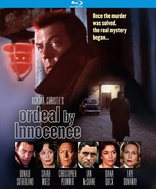Ordeal by Innocence Blu-ray Movie
HomeOrdeal by Innocence Blu-ray Movie 
Kino Lorber | 1984 | 90 min | Rated PG-13 | Jun 18, 2019Movie rating
6.2 | / 10 |
Blu-ray rating
| Users | 0.0 | |
| Reviewer | 2.5 | |
| Overall | 2.5 |
Overview
Ordeal by Innocence (1984)
Donald Sutherland stars in this 1984 film based on the novel by Agatha Christie. Dr Arthur Calgary (Sutherland) returns home from an expedition and goes looking for a hitchhiker whom he gave a lift to two years previously in order to return the man's address book. He discovers the man has been executed for his mother's murder and, furthermore, the address book which he is returning could have proved the hitcher's innocence. So who is the real murderer?
Starring: Donald Sutherland, Faye Dunaway, Christopher Plummer, Sarah Miles, Ian McShaneDirector: Desmond Davis
| Mystery | Uncertain |
| Thriller | Uncertain |
Specifications
Video
Video codec: MPEG-4 AVC
Video resolution: 1080p
Aspect ratio: 1.85:1
Original aspect ratio: 1.85:1
Audio
English: DTS-HD Master Audio 2.0 (48kHz, 16-bit)
Subtitles
English
Discs
Blu-ray Disc
Single disc (1 BD)
Playback
Region A (B, C untested)
Review
Rating summary
| Movie | 3.0 | |
| Video | 3.0 | |
| Audio | 1.5 | |
| Extras | 1.0 | |
| Overall | 2.5 |
Ordeal by Innocence Blu-ray Movie Review
Reviewed by Dr. Stephen Larson July 27, 2019After an era of fairly successful adaptations of Agatha Christie novels—notably Murder on the Orient Express (1974), Death on the Nile (1978), The Mirror Crack'd (1980), and Evil Under the Sun (1982)—the parade of works brought to the screen by one of Britain's greatest mystery chroniclers was nearing the end. The Cannon Group's Ordeal by Innocence (1984), adapted from Christie's eponymous 1958 novel (which was one of her favorites), was released in American cinemas in the late spring but hardly anyone saw it outside of ten or so press critics. One wonders that, with at least three award-winning actors, why it hadn't gotten wider play? "Actually, with all the talent in the credits, you have to wonder at the minimal fanfare 'Ordeal' is getting from the Canon Films publicity department," questioned Rick Chatenever of the Santa Cruz Sentinel.
Dr. Arthur Calgary (Donald Sutherland), a paleontologist, has arrived by boat around the coastal town of Devon where a prosperous family (the Argyles reside) in a manor circa 1953. Arthur has come a long way to return an address book left in his car after picking up a hitchhiker, whose the family's son, Jack Argyle (Billy McColl). When Arthur enters the private quarters of patriarch Leo Argyle (Christopher Plummer), a gun enthusiast, he's startled to learn that Jack was hung to death two years ago after supposedly murdering his stepmother, Rachel Argyle (Faye Dunaway). Arthur also gathers from Leo that Jack allegedly committed the heinous act on the very day that he picked him up on the road. Arthur steadfastly contests that Jack must have had an alibi because he was with him in the car during the murder. But Leo and most everyone else in the family isn't interested in reopening the case, nor do they exhibit much grief over Jack and even Rachel's deaths. Arthur goes to Inspector Huish (Michael Elphick) but he's reacts impassively to the chain of evidence that the amateur sleuth's been mounting. However, there are three somewhat distant members of the Argyle clan with knowledge of the inner sanctum as well as circumstances surrounding Rachel's will who may be able to provide Arthur with those who had motive.
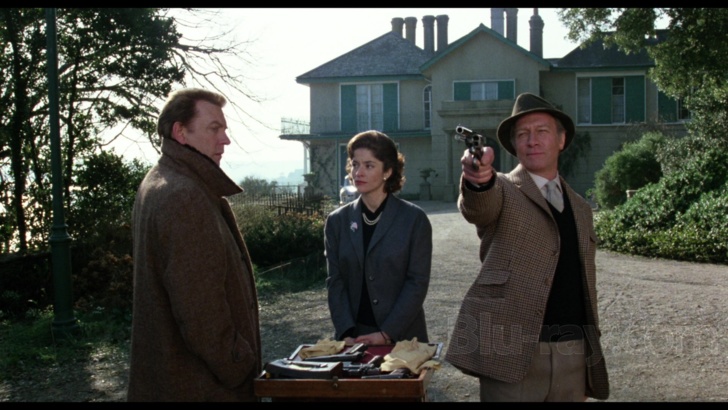
Ordeal by Innocence is a solid Christie mystery/thriller but as I watched it, I felt myself interrupted by the staccato editing. My research indicates that the film underwent heavy changes in post-production and editor Timothy Gee has tried to speed the action up with interlocking flashbacks. While the cutting makes the narrative less pedestrian, it also impedes the flow as characters drift in and out.
*Note that this is the uncut version of the film. Although it was originally rated PG-13 by the MPAA, there's a scene with a bare-breasted lady in bed waiting for Dr. Calgary's arrival.
Ordeal by Innocence Blu-ray Movie, Video Quality 
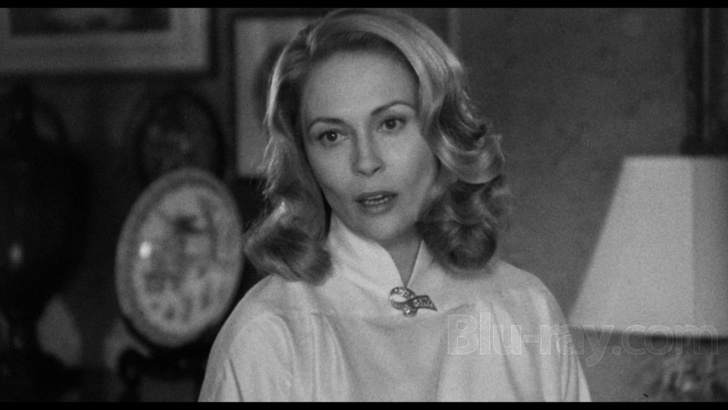
Quite astonishingly, this is the first time Ordeal by Innocence has appeared on home media since MGM/UA put out an "Extended Play" full-screen LaserDisc in 1985. (This is also the first time it's been released on DVD.) The movie appears in its originally exhibited aspect ratio of 1.85:1 on this MPEG-4 AVC-encoded BD-25 courtesy of Kino Lorber. The feature boasts a healthy bitrate at 27543 kbps. Kino advertises this print as struck from a "brand new HD master – from a 2K scan of the 35mm interpositive." The movie was shot by the great British cinematographer Billy Williams (The Wind and the Lion; Gandhi; On Golden Pond). Williams worked with a very grainy '80s film stock that the viewer can immediately notice during the main credits (beginning approx. with Screenshot #19). There's a very thick and coarse grain that stands out in the foggy exteriors. This is the way it was intended to be seen. Bob Campbell of The Arizona Daily Star observed that: "Visually...the picture looks like it was videotaped off Bulgarian television. The exteriors are dreary, bilious, fogbound. That's fine, but so are the interiors." Gannett News Service writer Mike Hughes described the subdued palette as "a look that is dark murky, and rather cheap." Very surprisingly, the Los Angeles Times' Kevin Thomas called the 800-year-old Devon coastal town of Dartmouth "a gorgeous locale." Though this is a British period drama, it has an anti-Merchant Ivory aesthetic. Colors are generally drab, dreary, and grey. The picture alternates between color for the present scenes and black and white for the flashbacks (see capture #s 2, 12, and 13). Some of the B&W shots have contrast flickering and the frame has a slight telecine wobble. Light scratches and blotches occasionally mar the image. The flesh tone on the nanny (click on #14 for a frame enlargement) appears washed out as the reverse camera angle (from Dr. Calgary's perspective) fixates on her face. Whether this was sunlight coming from an above window or overexposed light, I'm unsure but it looks too bright.
On the positive side, primary colors and shots of flowers/greenery are much better rendered. I thus differ from Campbell's overgeneralization. See in particular Philip Durrant (Ian McShane) seated in the greenhouse (#11).
Kino has provided eight chapter markers for the 90-minute feature.
Ordeal by Innocence Blu-ray Movie, Audio Quality 

Kino has supplied the film's original monoaural mix, presented here as a DTS-HD Master Audio Dual Mono (1558 kbps, 16-bit). Viewers will doubtlessly find the audio much more problematic than the multi-flawed transfer. I found myself struggling to locate a sound field on my Onkyo receiver so I could comprehend (at minimum) the gist of the dialogue. I started with regular Mono, switched to a generic Stereo, and finally got a decent pitch with Pro Logic II. But I had to turn the volume way, way up. The sound is flat and exclusively deployed on the center channel. I noticed a conspicuous hiss that intermittently returns on the track during a reel change or a cut to a flashback. The only sonic elements that rise in pitch are gunshot sounds and music. I don't have any finite data on the production budget but there were no special resources for the sound mixers. McClatchy News Service writer George Williams saw a release print of Ordeal by Innocence and groused: "it has a flawed soundtrack so that you cannot hear half of what's said."
The other controversy about the sound track that's divided critics in half (as well as this reviewer) is the producers' decision to swap Pino Donaggio's original dramatic score for a pastiche of Dave Brubeck's greatest jazz hits. Initially, it was Donald Sutherland's idea to approach Brubeck, according to the latter's manager. Record producer Bruce Kimmel found that Brubeck was informed that he would have two weeks to write the score but he refused. It was then decided that preexisting Brubeck instrumental tunes would be newly recorded for inclusion in the film. This is also a likely case in which the producers were restless with the narrative's languid pacing and wanted to spice it up with bouncy rhythms courtesy of the Brubeck Quartet, which included four performers playing piano, clarinet, saxophone, recorder, bass, trombone, and drums. It seems to me a conscious effort to incorporate didactic counterpoint so the music calls attention to itself. Brubeck does play some mood-enhancing keys on the treble clef to accompany the suspense.
I've listened to the rejected score by Donaggio and consider it the superior companion to the film. The out-of-print Kritzerland album encompasses all the music De Palma's frequent composer wrote and sounds at times like Dressed to Kill (1980). He incorporates some synths but it's dominated by sweeping and haunting strings that turn suspenseful as the contrapuntal melodies shift in tone. The CD's recording was mastered and compiled from first-generation two-track mixed music masters that sound unimpaired. Too bad the same couldn't be said about the damaged mono track on the Blu-ray.
We're only half-lucky for the presence of optional English subtitles because they don't identify the characters and the subs are sometimes out of synch with the on-screen speaker.
Ordeal by Innocence Blu-ray Movie, Special Features and Extras 
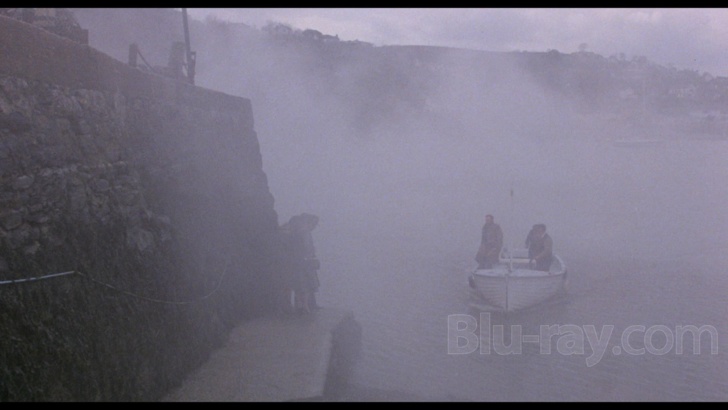
- US Trailer - an average trailer that does a decent job of selling the film.
- International Trailer - I prefer this trailer over the American one. Both trailers actually display the flashbacks in color! I like how the overseas trailer is cut together.
- Bonus Trailers - the other Kino trailers on this disc are The Rosary Murders, The High Commissioner, The Thomas Crown Affair, and Witness for the Prosecution.
Ordeal by Innocence Blu-ray Movie, Overall Score and Recommendation 
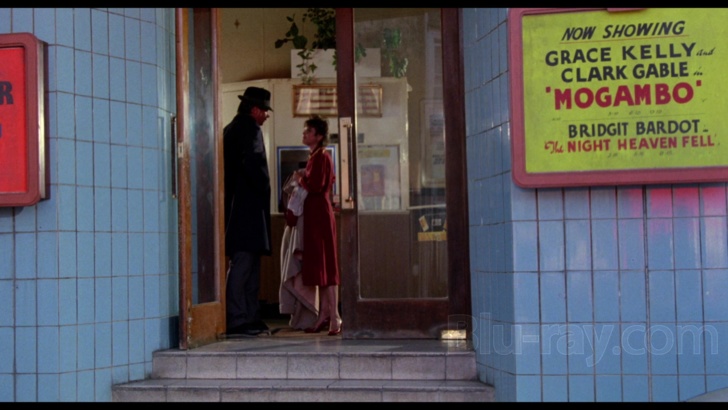
Director Desmond Davis began his filmmaking career as a camera operator for several of Tony Richardson's films and thereafter rose in ranks, mostly directing for TV on the BBC. Unfortunately, Ordeal by Innocence had no impact on his working life as a feature director for the silver screen. The Cannon Group had a difficult time finding the kind of film that it could sell besides the readers of Christie's novels. Kino delivers a very average transfer but its when we get to the audio where things really unravel. I hope that the extant 35mm magnetic monaural track receives a very thorough remastering job because this one sounds like a worn VHS tape. I'm also crossing my fingers that Pino Donaggio's deleted score will be included on a BD as an isolated track for the specific scenes that were spotted and scored. The subtitles are definitely needed but I'd first consider a rental or streaming service before making a purchase.
Similar titles
Similar titles you might also like

A Study in Scarlet
1933

Dressed to Kill
Prelude to Murder / Sherlock Holmes
1946

Terror by Night
Sherlock Holmes
1946

The House of Fear
Sherlock Holmes
1945

The Scarlet Claw
Sherlock Holmes
1944

Sherlock Holmes Faces Death
1943

The Mirror Crack'd
1980

A Perfect Getaway
Unrated Director’s Cut
2009

Torn Curtain 4K
1966

Evil Under the Sun
1982

Sherlock Holmes and the Voice of Terror
1942

The Raven
2012

Dark Places
2015

The Spider Woman
Sherlock Holmes
1944

The Adventures of Sherlock Holmes
1939

Four Flies on Grey Velvet 4K
4 mosche di velluto grigio
1971

The Number 23
2007

A Dragonfly for Each Corpse
Una libélula para cada muerto
1975

Murder!
1930

The Trouble with Harry
Alfred Hitchcock Masterpiece Series
1955
